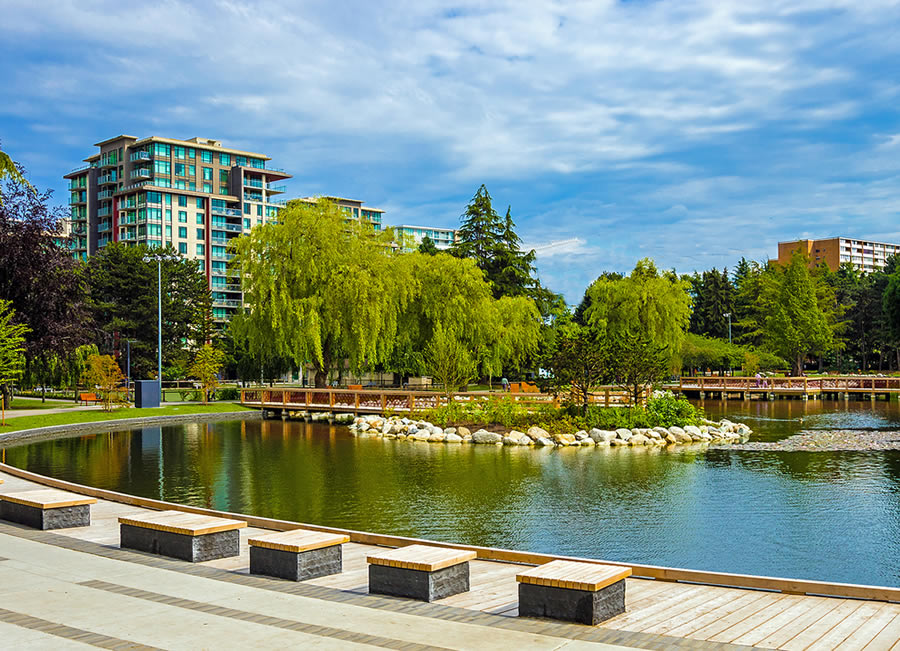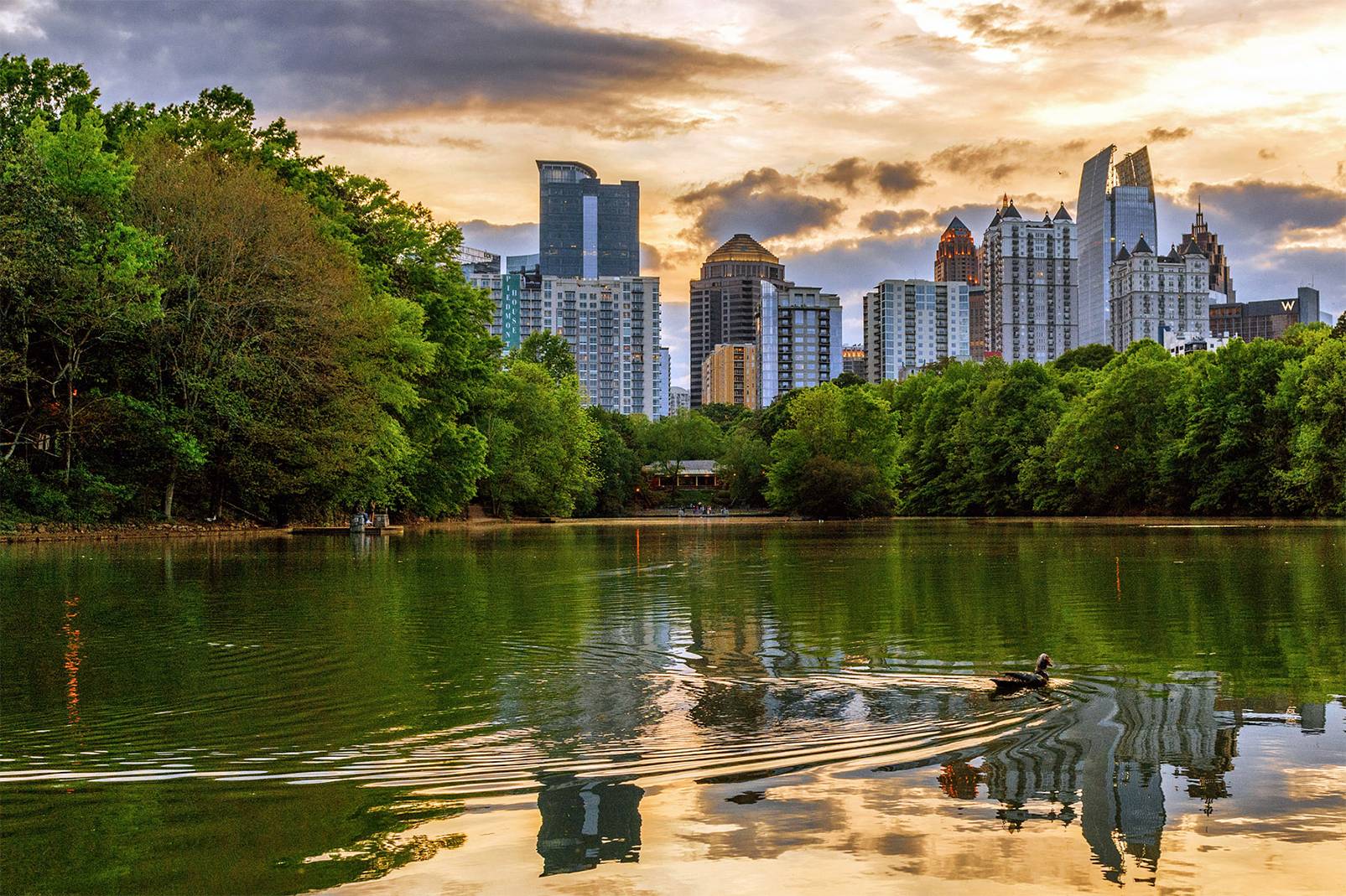
Retention ponds are designed to manage stormwater runoff and thereby reduce flooding, control erosion, and improve water quality by allowing sediments and pollutants to settle before water eventually filters into surrounding soil or drains into waterways.
Without routine retention pond maintenance, however, these water bodies can accumulate high levels of nutrients and develop poor water quality and issues like algae blooms. Additionally, sediment build-up can reduce a pond’s storage capacity and effectiveness.
In this brief article brought to you by the lake and pond maintenance specialists at Aquatic Restoration, we shed light on ways to improve the water quality of your retention pond. If you’d rather consult with a trained professional, then contact Aquatic Restoration to schedule a face-to-face meeting or on-site visit.
Excess nutrients, particularly nitrogen and phosphorus, are major contributors to poor water quality and algae growth in retention ponds. These nutrients often come from fertilizers, animal waste, and organic material like fallen leaves.
When nutrients accumulate, they create a perfect environment for unsightly and harmful algae blooms. Algae can deplete oxygen levels in the pond, threaten fish and beneficial bacteria, and disrupt the pond's natural balance.

The solution is seemingly simple: control nutrient levels. Consider establishing a buffer zone around the pond with native plants and grasses that absorb excess nutrients before they reach the water. Moreover, limit the use of fertilizers near the pond and educate those using nearby lawns and gardens about the potential impact of runoff.
By circulating the water, aerators increase oxygen levels. The benefits are many. For one, it prevents the growth of anaerobic (low-oxygen) zones that can lead to unpleasant odors and harmful bacteria. Aeration also helps break up stratification, a condition where water forms layers based on temperature.
There are several types of aerators available for ponds. The most common are surface aerators and diffused aeration systems. Choose an aeration system that’s appropriate for the pond’s size and depth.
Sediment often enters the pond through stormwater runoff. These include pollutants, nutrients, and organic matter among other debris. Over time, these sediments can settle at the pond’s bottom, reduce its depth and storage capacity, and ultimately diminish its ability to control flooding and filter water.
Regular dredging, or sediment removal, is dedicated to this threat. Dredging may be required every few years or as needed depending on the pond’s size, location, and the level of surrounding development.
Testing parameters like pH, dissolved oxygen, turbidity (clarity), and nutrient levels can give you valuable insights into the pond’s health and alert you to potential issues before they become serious problems. This data allows you to take targeted, proactive actions rather than waiting for visible symptoms like algae blooms or foul odors.
Maintaining a retention pond involves many moving parts, and working with a professional lake or pond management service can make the process easier and more effective. The specialists at Aquatic Restoration bring experience and specialized equipment to execute a custom approach to maintaining your lake or pond.
Call or message Aquatic Restoration today to get in touch with a member of our team. We are happy to schedule a consultation or on-site visit for as soon as possible.
Recreational lakes are valuable community and private assets, offering opportunities for boating, fishing, swimming, and relaxation. Over time, however,…
Stormwater ponds form a part of modern stormwater management systems. As the name suggests, they collect and manage runoff from…
Sediment buildup is one of the biggest threats to lakes and ponds. It not only impacts water quality but also…
If you own a pond or lake, you know that proactive maintenance is an integral part of keeping the…
If you’ve ever walked outside and noticed your lake suddenly turn a murky shade of green, you’re not alone. Many…